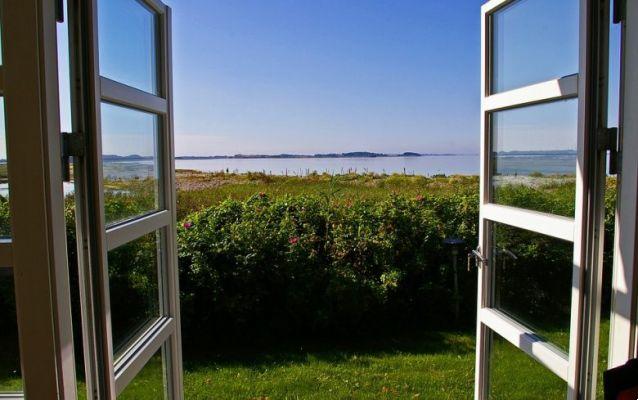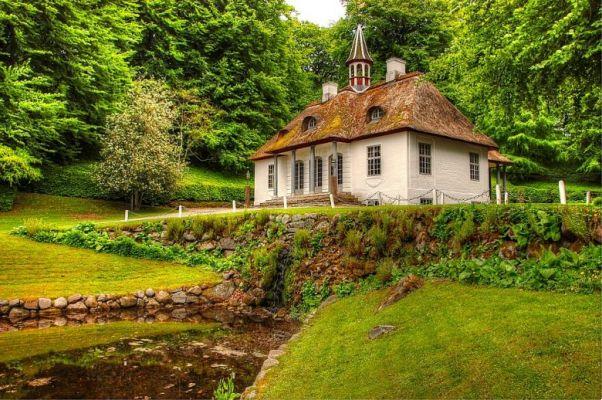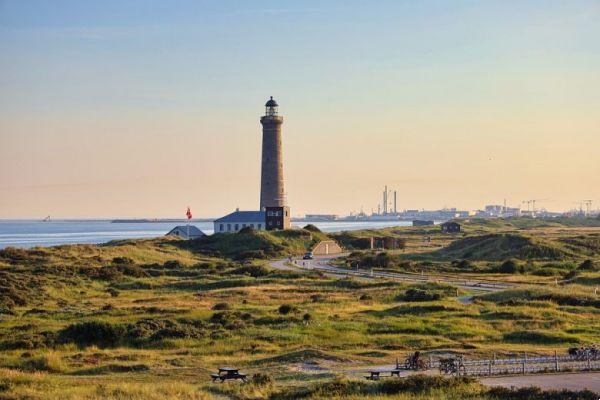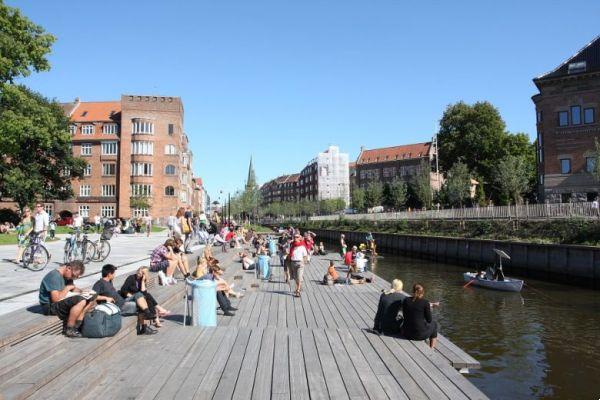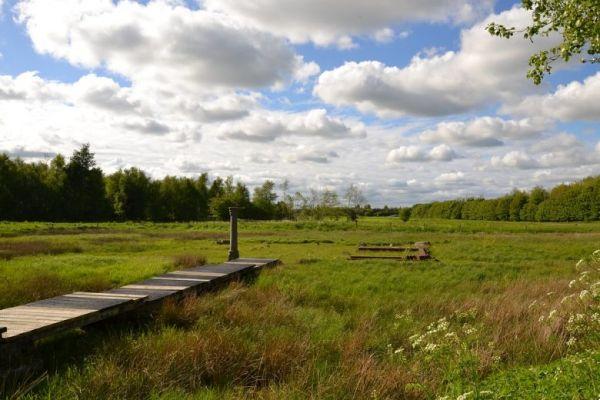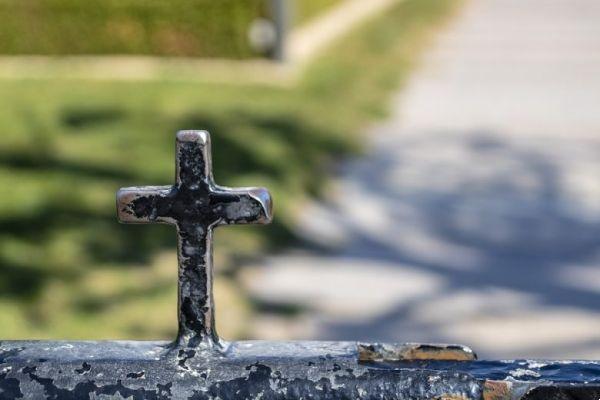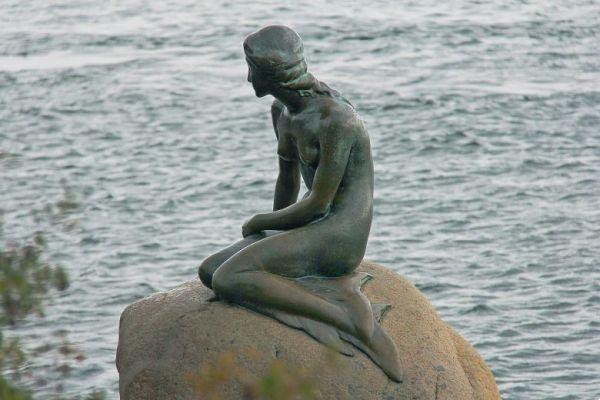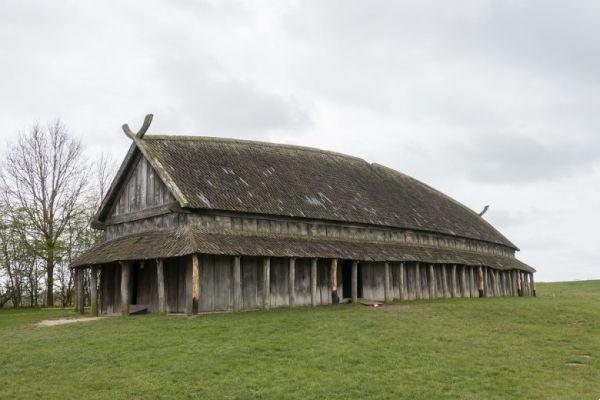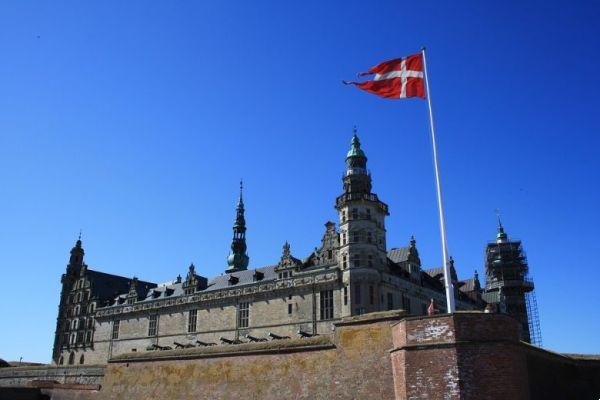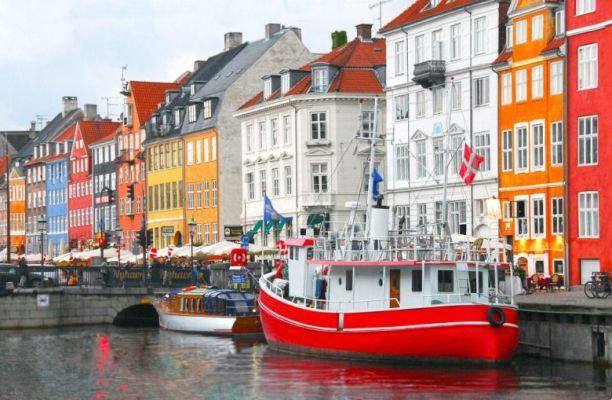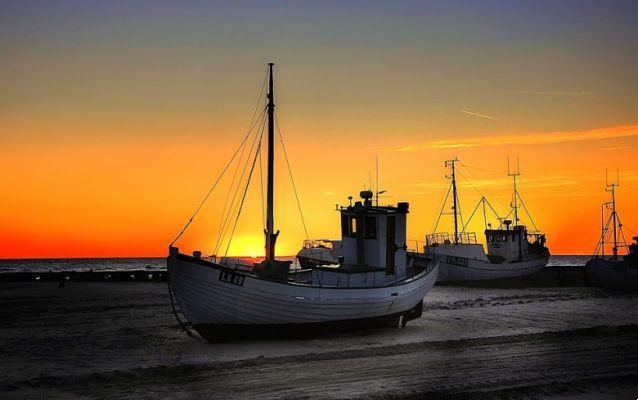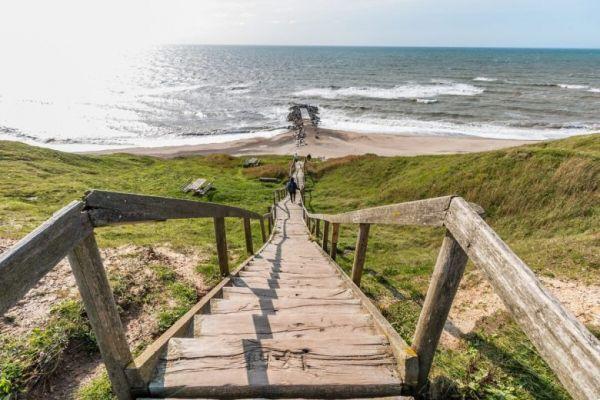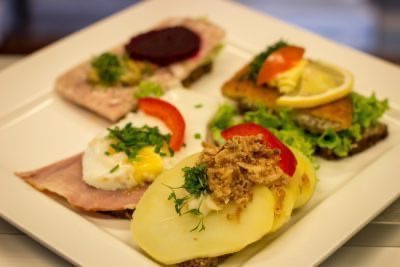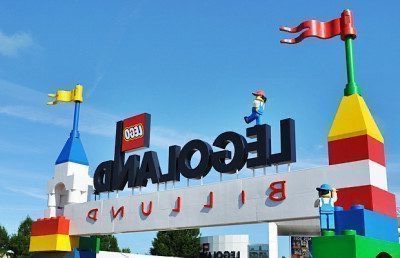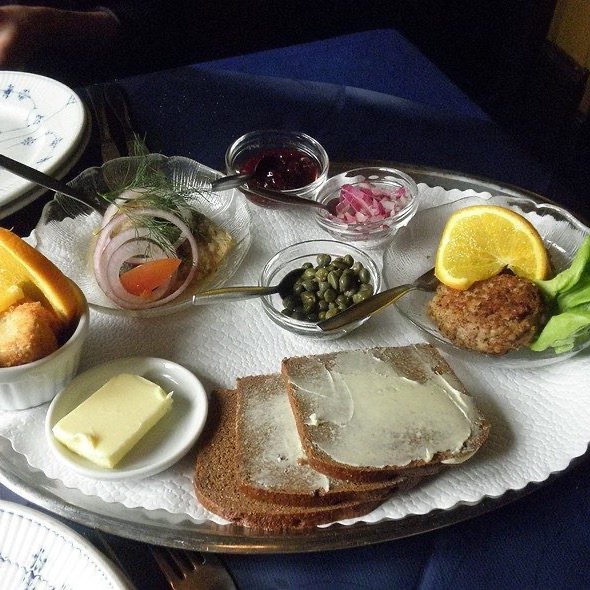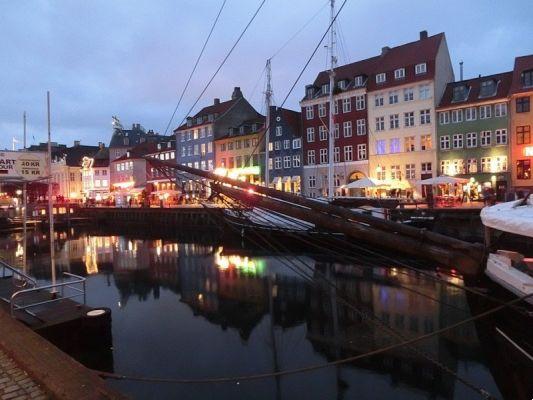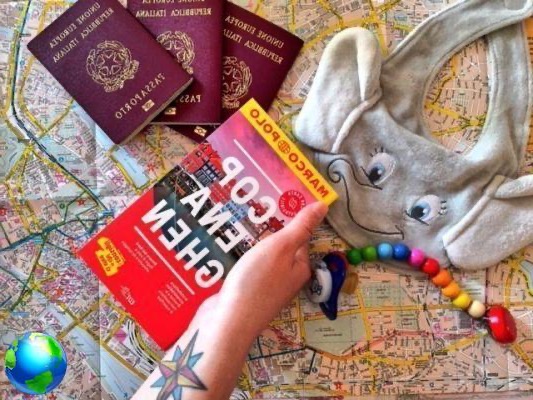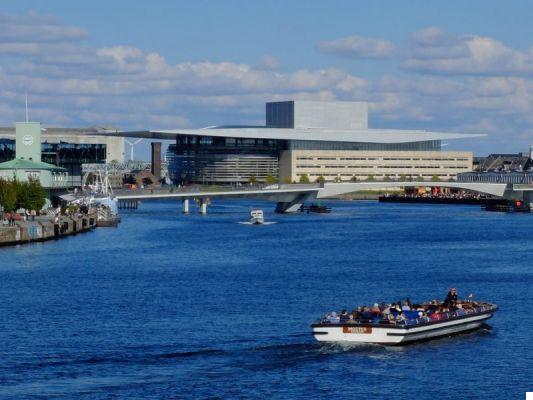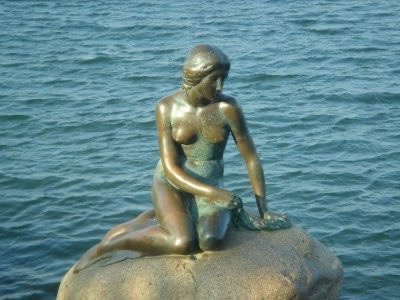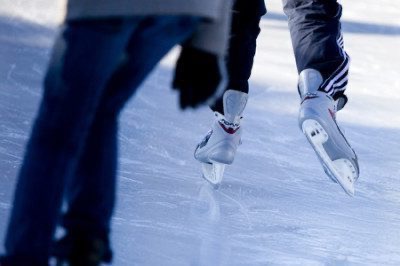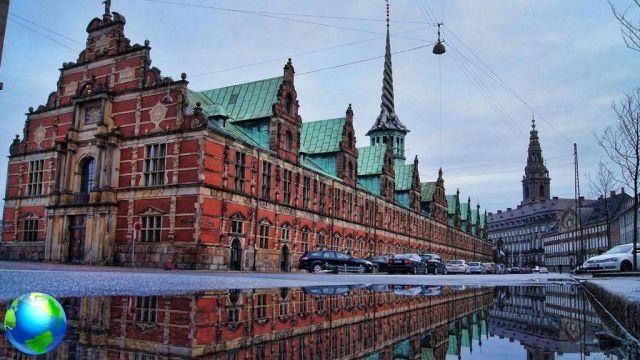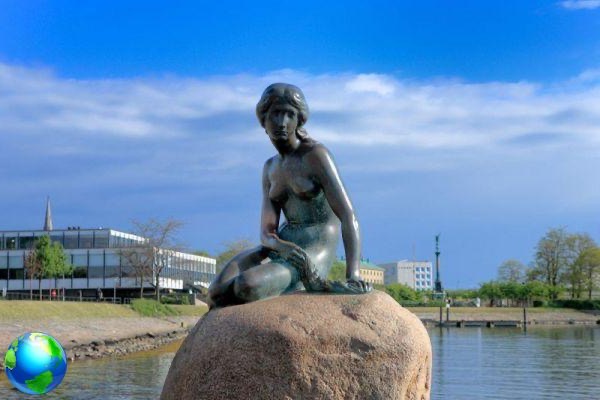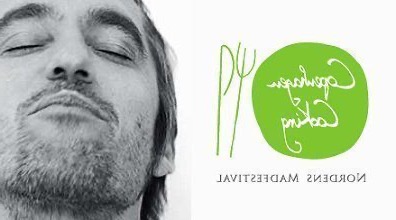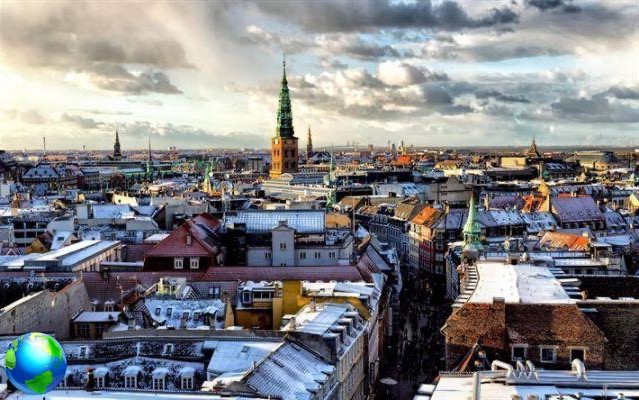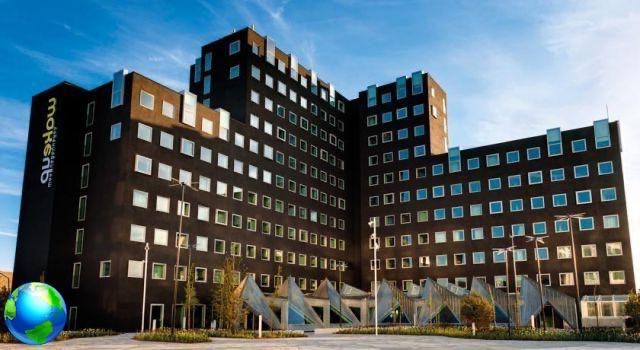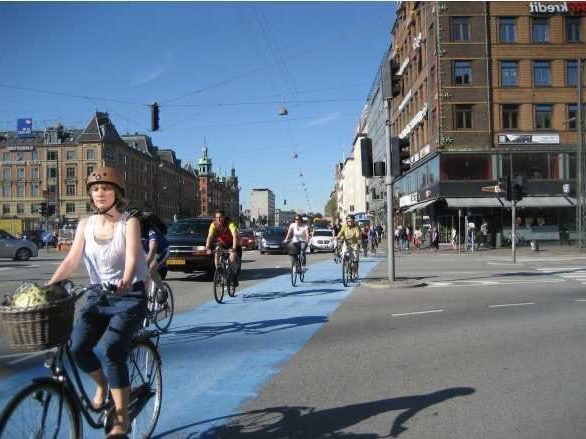Discover Denmark in Camper, the extraordinary land of the Vikings. Here is an exciting travel story that will lead you to discover the wonders of this fantastic land.
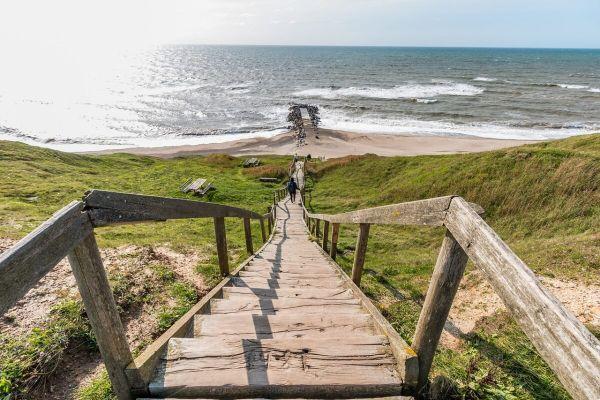
- What to see and what to do in Denmark: travel story, emotions and experiences
- Denmark: useful tips and information
- History
- The climate
- The population
- Stores
- The coin
- Prices
- The bike
- The viability
- The food
- The tongue
- Curiosity
- Denmark pictures and photos
What to see and what to do in Denmark: travel story, emotions and experiences
We made the trip from 12 to 24 August 2020 with our camper, using mostly equipped areas for overnight stays.
Our adventure in Denmark starts to Puttgarden , still in German territory, where we take the ferry that takes us to Rodbyhavn, on theLolldand Island.
La Denmark is made up of numerous islands, but this is not a big problem for the Danes because the connections between them and with the mainland work very well and, where it is
been possible, bridges were built (sometimes accessible by toll), beautiful engineering works that do not disfigure the landscape.
The ferry we take is from Scandlines, which ensures the connection on this route every 30 minutes.
The crossing takes about 45 minutes on rather modern ships with inside shops, bar, restaurants to ensure maximum comfort.
America Coast to Coast
Obviously most people prefer to enjoy the scenery on the deck (when the weather permits).
The cost is quite high (71 euros for us who travel with the camper) but it must be said that the organization is excellent and check-in does not last more than a quarter of an hour.
Tickets can also be purchased in advance or booked via the scandlines.dk website.
Be careful that they charge you the appropriate fare for your type of transport in
how much there have been reports on this especially for vehicles of a certain weight…. in this case, do not hesitate to show the registration certificate of your vehicle.
The island of Lolland is mainly agricultural and there are no particular places to visit.
Leaving the port you immediately have a sense of peace and tranquility, everything around is green and people live in villages where, for the first time, we see the beautiful and typical Danish houses.
We cross the island and reach there'Isola in Falster, connected to the first by a bridge.
We have been in for a few hours Denmark and already we would like to move here forever.
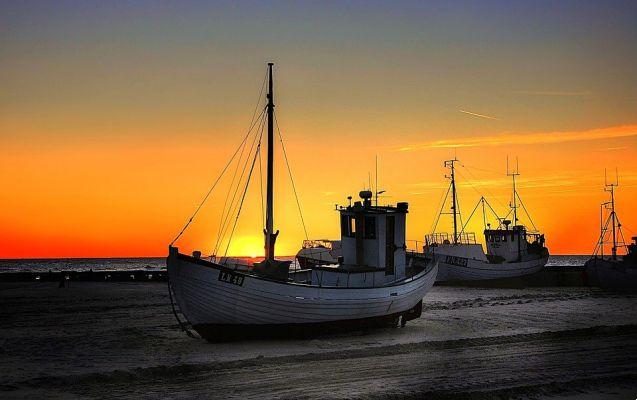
Also Falster it is mainly agricultural, but its coasts have splendid beaches of sand clear that attract many German tourists.
Here we decide to turn the island through the "Margherita route".
Things? It is an alternative itinerary, through small and little-traveled streets, to discover delightful places, old mills, characteristic houses.
The itinerary covers 3500 km of secondary roads throughout the country and it is possible to request a map at any tourist office.
To embark on the route, simply follow the road signs with the daisy symbol.
After getting lost a couple of times and seeing suggestive views we decide to head towards the islet of Bogo, and from there towards the island of Mons, to see the famous cliffs of "Mons Klint".
Portugal and Andalusia Tour
Mons Klint they are chalk cliffs formed in ancient times when shell deposits were raised from the seabed.
They are 120 meters high and offer a fantastic show.
I suggest, however, unlike what we did, to arrive there in the morning when the light of the sun rising from the sea reflects its rays above us.
The cliffs can be admired from above along one of the many paths that lead into the beech forest that grows along the coast, or by going down to the beach via a very long staircase (about half an hour's walk).
It is a rather crowded place with tourists and to park it is necessary to pay (only in crowns) but a walk inside the forest allows you to feel far from everyone in a few minutes.
This is also the habitat for numerous species of rare and protected orchids, but we have not seen any…. maybe we weren't so careful.
Take advantage of it also to take a walk on the stony beach close to the cliffs, but be careful of the high tide.
Leaving “Mons Klint” we visited Nyord, a small and characteristic fishing village that struck us for the quantity of birds that nest there.
This area of the island, in fact, is rather marshy and there is a notable presence of birds and therefore there are various areas dedicated to bird-watching.
We leave theisland of Mons and through a bridge we arrive on the island of Sjaelland, that of Copenhagen to be clear.
This island is also mainly devoted to agriculture, but here, alongside the peasant villages and quiet towns, cities of a certain size have developed.
We visit this island Koge , Rungsted, Helsingor, Hillerod, Roskilde, Trelleborg and obviously, Copenhagen.
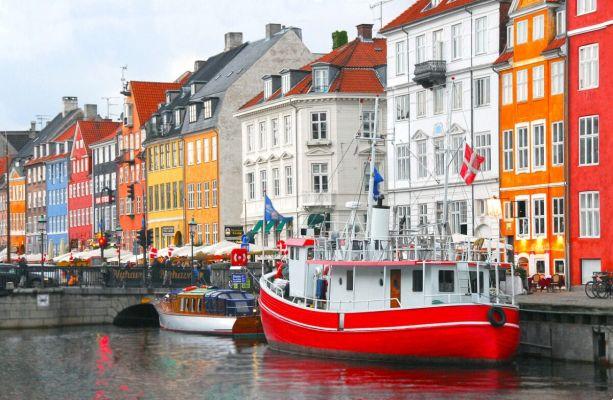
Koge is a city of ancient origins with an important port for the country's economy.
It has numerous historic buildings and half-timbered houses that rise along the Vestergade and the Kirkenstraede, we liked it and I recommend the visit that will take you no more than 2 hours of time.
We only went to Rungstead to visit the “Karen Blixen Museum” located in the house she herself lived in.
For those unfamiliar with her, Karen Blixen is one of the most important Danish writers, known to us because the film “My Africa” was made from one of her books.
The house contains the original furnishings, photographs and numerous objects from his home in Africa.
Part of the property is used as an ornithological reserve. I recommend a visit only if you are really interested in the life of this character.
Helsingor the visit is certainly worthwhile, both for the town and for its castle, the “Kronborg Slot“.
It is located at the narrowest point of the canal that separates Denmark from Sweden and for this reason it is full of Swedes who come here to shop especially for alcohol!).
The town is pleasant and has some beautiful old houses.
Il castle of Kronborg, declared a World Heritage Site by UNESCO, is a must see.
It became famous because "Hamlet" was set here even if it was not really a home, but given its location, it served more than anything else as a duty against ships passing through the strait.
The interiors are very beautiful, but what struck us most are the dungeons, a dense network of underground tunnels that the Danes enjoy exploring with batteries.
This is why it is possible to buy a ticket just to visit these.
Inside an underground room there is the statue of the Viking chief Ogier who is said to be placed there to watch over and intervene in case of need.
After the visit of the castle I recommend a walk on the terraces from which you can enjoy an excellent view of the canal and Sweden.
Another castle that certainly deserves a visit is the "Frederiksborg Slot" of Hillerod, which unlike Kronborg is a Dutch Renaissance style residence.
Its structure which stands on three islets is a dream and before visiting it I recommend that you admire it from the gardens overlooking the lake in which it is located.
It belonged to the royal family until, devastated by a fire, it was bought and restored by the owner of the Carlsberg, transforming it into a museum.
If you plan a visit in Denmark you cannot miss it for the beauty and opulence of the interiors. Of all the room we liked the most is the chapel where the Danish kings were once crowned, the only room not touched by the fire and which therefore retains the original furnishings.
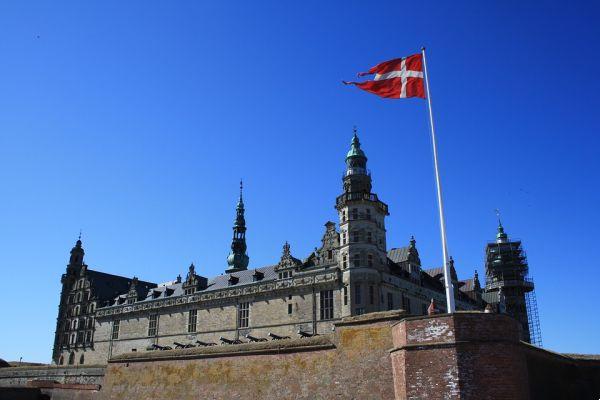
You may have already heard of Roskilde if you are passionate about music, because a famous rock festival is held here.
We, however, went here for our first appointment with the Vikings.
This city, in fact, was founded by the Viking king "Aroldo Dente Azzurro" and here there is an interesting Viking Ship Museum where the 5 Viking ships found in the 60s and restored are exhibited.
Undoubtedly the most beautiful museum of its kind we have ever visited as it combines areas dedicated to practical activities to the exhibition.
It is the ideal place for children who can try their hand at building a ship, making coins and jewelry, where they can wear clothes similar to those of the Vikings and wander around reconstructing environments from that era.
It is also possible to witness the work of scientists who are still restoring pieces of the found ships.
Definitely worth the ticket price!
The city itself does not offer great attractions, but it is pleasant for a stroll. The cathedral could be worth visiting, but I can't tell you anything about it because we found it closed.
Trelleborg it is the second Viking site we visit.
Here are the remains of a Viking fortress, the best preserved in Denmark.
In this place it is also possible to see the reconstruction of a Viking village and, in the high season, you can participate in various activities related to the life of the Vikings.
A museum houses the artifacts unearthed in the place.
When we were there the center was closed, but it was possible to visit the fortress freely. Impressive is the reconstruction of a community house rebuilt in the style of the time that we will see other times in our trip.
Copenhagen and the Capital of Denmark and, despite its size, it is a very livable and pleasant city.
What is striking first of all is the fact that there are no very tall buildings, like many other capitals, because it has developed horizontally.
It is a very easy city to get around both on foot and by car, the traffic never reaches the levels of our big cities, perhaps because here many people use bicycles and public transport. they are pretty easy to find.
Many, before departure, had advised us to leave out Copenhagen or to devote little time to it as it lacks characteristic things.
We were here one evening and the next morning, I must say that I would have preferred to stay longer because I liked what I saw very much.
In the evening we took a leisurely stroll through the center to the Nyhavn canal, which is lovely at this time of day. Beautiful sailing boats are moored in the canal and around it numerous bistros and period houses surround it.
With the sunset lights it is beautiful.
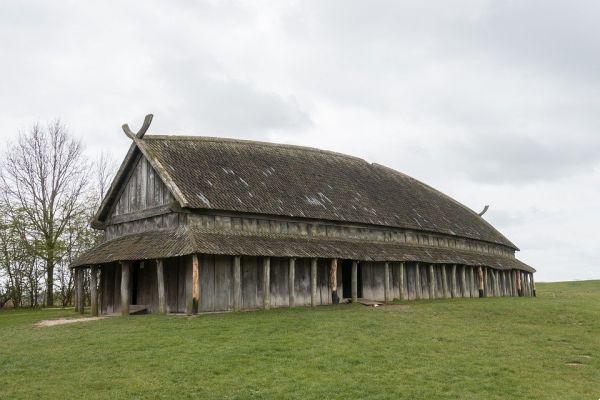
The next day we went to see the Amalienborg Slot, the residence of the royal family, the “Marmorkirken” church, and we crossed the “Kastelet”, the fortified citadel.
In its magnificent and imposing gardens is the "Fountain of Gefion" which depicts an ancient Danish legend.
From here you reach the famous Little Mermaid, a tourist destination par excellence.
Also of monument, symbol of Copenhagen, they didn't talk to us very well, but I liked it, above all for its grace and its position, on a rock just lapped by the waters of the port.
Although not a very large statue, it is clearly visible and can be photographed, tourists permitting. When we were there it was still early and we were lucky because we were able to admire it for a few minutes in solitude.
We didn't visit anything else in Copenhagen, as our days were numbered and we feared we might not be able to complete the whole tour in good time.
If, however, you have the opportunity to linger a little longer, I suggest you visit "Tivoli", the amusement park located right in the center of the city.
Inside, in addition to the attractions, there are restaurants, gardens and shows.
Particularly impressive is in the evening (we saw it from the outside) illuminated by lights and every Wednesday and Saturday after midnight you can watch a fireworks show.
If you like to visit museums, here you will be spoiled for choice, for example, I would not have minded visiting the Gipsoteca which houses numerous paintings by Gaugin, Van Gogh, Monet Cezanne…. painters I love !.
If, on the other hand, you are passionate about shopping, you cannot miss a walk along the “Stroget”, the main street where there are many beautiful shops. Too bad the prices are much higher than here!
An idea that we would have liked to implement is the boat ride to see the city from the sea…. Maybe next time.
To leave the island of Sjaelland and reach the island of Funen it is necessary to cross the “Storebaelts” the bridge that connects the city of Korsor to that of Nyborg.
It is a huge and very important engineering work for the local population which has seen travel times drastically reduced on the Store Baelt canal.
It consists of two bridges that join together on the islet of Sprogo for a total of 18 km.
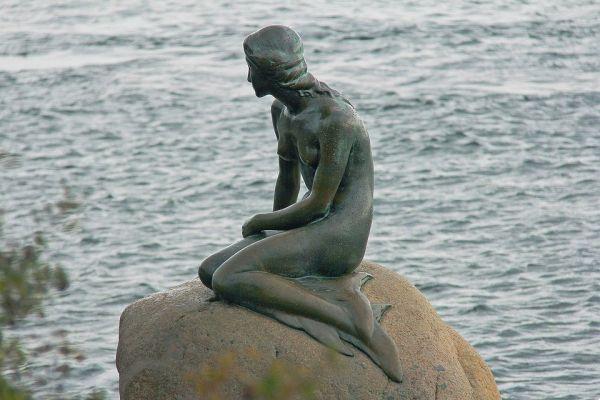
Il Ostbro bridge it is very beautiful, it is characterized by a single span which makes it the second longest suspension bridge in the world, and has two very high towers.
Funen Island also has rural features, with small villages and typical thatched-roof houses.
From this island we visit Odense and Egeskov.
Odense is the main city of the island.
Maybe when we got there it was a beautiful day or the fact that it was a day of celebration, but it seemed like a pleasant and welcoming place.
There are numerous pedestrian streets, lots of nice shops and so it's a great place to stop.
This city is also known for being the birthplace of the writer Andersen, whose birthplace and museum can be visited.
Interesting is the “Fyrtojet”, a cultural center for children, a place for games centered on Andersen's fables. Here there is a theater where children can try on stage costumes and improvise shows.
Every Sunday morning around lunchtime in the lawn in front of the center, a free show is made that summarizes all the fairy tales a little.
We were lucky and were able to assist you: really fun, suitable for both adults and children.
Although the show is exclusively in Danish and therefore incomprehensible, the gestures and skill of the artists make it unmissable.
Needless to say, my girls were enchanted, also thanks to the scenario in which it took place.
In fact, in the meadow, a reproduction of a castle type from fairy tales is built and all around there are flower beds of colorful flowers and of the most varied shapes: butterflies, birds and other animals ... a fairy tale!
In Odense we did not visit anything in particular, but we joined the many Danes who strolled amiably along the pedestrian streets of the center and enjoyed the day.
Egeskov is a tourist destination thanks to its castle and the beautiful and particular garden that surrounds it.
The entrance fee for both of them is quite expensive, but if it's a nice day it's really worth it.
Plan to dedicate a whole day to it because the park is very large and hosts games, mazes and various exhibitions. Ideal for families!
After visiting the island of Funen we land on the mainland reaching the peninsula of Jutland by crossing yet another bridge.
In Jutland, especially the southern one, there are numerous urban centers, but also towns of historical interest.
The western part has very indented coasts with numerous fjords, while the eastern part has sandy beaches, often close to moors.
On our journey through Jutland we visit Jelling, Billund, Hobro, Aalborg, Skagen, Ribe, Romo, Tonder e mogeltonder.
Jelling it is a small town that we visited to see the runestones we had read about in a brochure.
This center is a Old Town which was the seat of the court of Viking kings. The largest runestone is fabulous and is thought to have been erected at the behest of Aroldo Dente Azzurro: on it is reported the oldest manifestation of the
Christianity of all Scandinavia.
Nearby you can also admire two burial mounds and it is possible to visit a church that seems to contain very old frescoes, but which was closed that day.
Billund it is famous for the presence of the LegoLand amusement park, which I have already talked about in my previous opinion.
Simply fantastic, suitable for all ages, you cannot leave Denmark without paying a visit.
Hobro is a small town known for the presence of a "Fyrcat", that is a Viking fortress very similar to that of Trelleborg.
The fortress is located a few kilometers from the town in the open countryside and its visit is subject to a fee. With the ticket it is possible not to see the fortress, but also the reconstruction of a Viking farm and a museum of finds from that era.
Extremely interesting is the farm where costumed animators illustrate and demonstrate Viking life.
For the little ones, workshops are organized and, depending on the day and time, children can carry out activities related to bread, wool, wood and iron.
My daughters were thrilled to be able to prepare a typical Viking muffin with their hands and cook over a high heat.
The entertainers, like most Danes, speak English fluently and are extremely kind and helpful especially towards younger tourists and in our case, as the girls speak only Italian, they made every effort to make them understandable. information related to these ancient peoples.
Inside the farm there is also the possibility to see and touch tools of the past and to dress according to Viking customs.
Truly a beautiful experience that has remained etched in the memory of the girls.
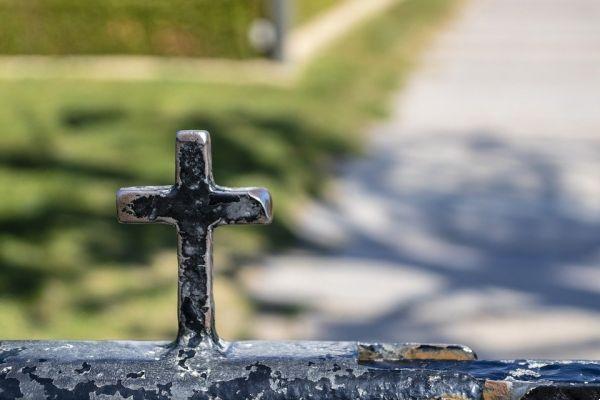
The museum, on the other hand, we have not visited.
We went to Aalborg only to see the Viking cemetery, the "Lindholm Hoje", which is located on a hill a few kilometers from the city. Here there are many tombs from the Iron Age to the Viking age, the latter are distinguishable because the stones that compose them are arranged in the shape of a ship.
Very useful are the explanatory signs in English which illustrate the site very well.
Further down, at the foot of the hill, there is another museum, which we do not visit.
Our tour here is short because we are hit by a notable storm that force us to rush back to our vehicle ... shame because the atmosphere we breathe is particular, mysterious, similar to that experienced in the Neolithic site of Carnac in France.
Skagen is located in the northernmost part of Denmark, a landscape of dunes and moors and a border point that you must see.
This town is an ancient fishing port and was the destination of many artists, so much so that even today there are many art galleries present.
It is a pleasant place to take a stroll.
Do not miss to go and see the ancient wooden lighthouse, similar to a swing, typical of these coasts with a rather stormy sea.
Near Skagen there are several places that deserve a visit, first of all “Grenen” the extreme northernmost point.
From the large parking lot, a half-hour walk on the beach takes you to the point where the land ends and the two seas meet, the “Kattegat” and the “Skagerrak”. if you are really lazy you can reach this point using the "Sandormen" an atypical tractor-bus that shuttles from the parking lot every 15 minutes.
The landscape is breathtaking, as is the wind that blows strong and cold here even on sunny days (dress accordingly).
Another place to reach is "Radbjerg Mile" the largest moving dune in Denmark. Climbing here is a must, even if you don't get the sand off until you return to Spain. It goes without saying that it is fun for children !.
Particular is the "Tilsandede Kirke", a church buried by the sand, of which only the bell tower emerges. I must say that this thing left us a little skeptical, given the place where it is located and the location of the church, but anyway and tourists come here in droves.
Last place we visited near Skagen is Hirtshals where we took a walk among the cliffs which hide numerous bunkers.
Almost at the end of our journey, we started to descend towards the southern part of Jutland stopping in the town of Ribe.
It's a shame we didn't have enough time to see Jutland's west coast of coves and fjords.
Ribe it is the oldest Danish city and deserves to be visited.
It has beautiful half-timbered houses and a remarkable cathedral which testifies to the town's past. There are two nearby Viking museums which seemed very interesting to us, but which we decided not to visit.
Here we were struck by a wooden column placed at the edge of the canal, richly decorated and carved that was used to calculate the level of floods.
From Ribe we head to the island of Romo, connected to the mainland by a causeway that offers a fabulous view of the surrounding marshes, a kingdom of waders and water birds and the meadows where flocks of sheep graze.
The island itself has no monuments to visit, apart from the skeleton of a whale, which we have not found.
However, its sandy beaches of considerable width are magnificent, so much so that they can also be traveled by car!
It is not surprising that they are frequented by a large number of German tourists who have also built small prefabricated houses here.
It would deserve to have bikes in tow and go around the island on two wheels given its small size (17 km long and 6 km wide). Ours stayed at home and then this is the last day in Denmark so we have lunch on the beach and then we leave in the direction of Tonder.
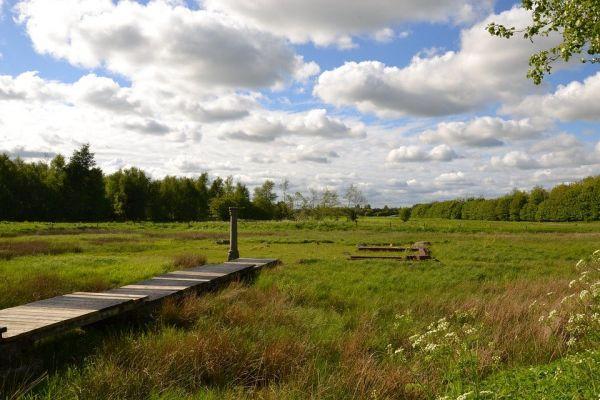
Tonder it is located very close to the German border and is also a pleasant place
where to spend a few hours walking. We arrive there on the eve of a music festival and preparations were in full swing. To see “Dem Gamble Apoteke”, the old pharmacy with a baroque portal, now transformed into a delightful gift shop where we spend our last crowns.
Here, perhaps due to the proximity to Germany, prices seem lower and we take the opportunity to stock up on candles.
Last stop of our trip to Denmark is Mogeltonder where you can find beautiful and characteristic Danish style houses. There is also a small castle owned by the crown and the residence of the queen's youngest son.
A delightful village with antique shops offering interesting merchandise.
Before crossing the border we stop again in Hojer where there is the only thatched town hall in all of Denmark and a very well restored Dutch style windmill decorated with all kinds of bird houses.
Our visit ends here. There would still be many things to see, first of all “Den Gamble By” in Arhus.
It is an open-air museum with restored half-timbered buildings that represent the reconstruction of a Danish provincial town. Inside, figures carry out the ancient activities as if it were real life.
They talked very highly of this place, but even if we were staying overnight Arhus It was not possible to see it, partly due to the lack of parking suitable for our vehicle in the vicinity and partly because that day the weather was very bad and we risked not being able to see anything.
We were enchanted by this country and it deserves to travel so many kilometers to visit them. I personally fell in love with the houses, their furnishings, their gardens. A full visit would take more than the 10 days we spent there, but this gives us the opportunity to come back again someday. A country that reconciles the old with the modern, rich in history and traditions but also projected towards the future.
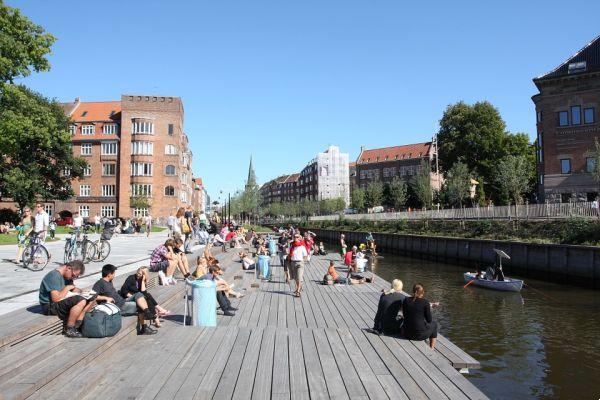
Denmark: useful tips and information
La Denmark it is part of the Scandinavian peninsula and overlooks the Baltic Sea and on North Sea.
It is made up of a peninsula, lo Jutland, and from a series of islands among which the largest are Sjaellan (on which Copenhagen is located), Fyn, Falster and Lolland.
From the morphological point of view, the town is mainly flat, with some alternating hills, while there are totally no large reliefs.
History
The oldest archaeological finds in Denmark date back to 110.000 BC, but this land is linked above all to the presence of the Viking civilization, who lived there between the XNUMXth and XNUMXth centuries and of which it is possible to visit some really interesting sites.
Currently Denmark is a parliamentary monarchy, one of the oldest in the world and together with the FAER OER islands and GREENLAND form the Danish Kingdom.
From 1973 it became part of the European Union, but did not join the single currency, thus keeping the Danish krone in use.
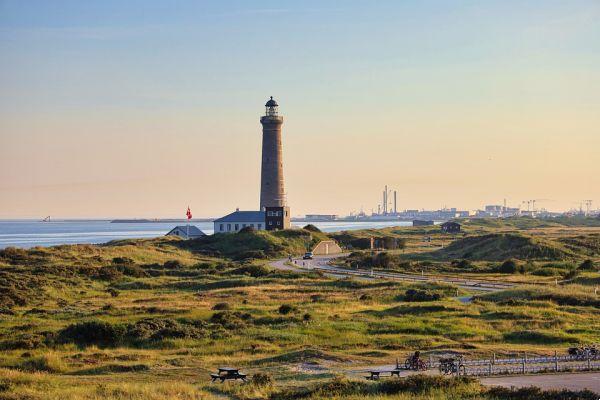
The climate
Given the country's position, one might think that Denmark is a cold country, but instead the climate is temperate, mitigated by the sea.
The weather is not as cold as I thought at the start, but certainly different from our temperatures in August. Then you have to get used to the drizzle that arrives punctually every day even for a short time.
The umbrella is useless and after a while you get tired of opening and closing it. The only solution is to do as the Danes do: do not care and go out with a hat and a waterproof jacket, preferably windproof.
The population
One might think that the Nordic peoples are cold people, but we have found the Danes extremely friendly and kind to us, willing to help or give directions to tourists.
A truly welcoming people, we witnessed this at the Viking farm in Hobro where an animator asked us for information about our country of origin and the journey we made.
Stores
One of the first things that strikes you is the closing time of the shops, in fact most of the shops close their shutters at 17.00 and after that time, it is difficult to find people walking, especially in small towns.
We have often been the last customers of the day, so if you need to shop, keep in mind the timetables.
The coin
Denmark has not joined the single currency and has kept its own currency: the Danish krone. Currently the conversion rate is around € 0,13 for one crown.
Take a few crowns with you, as credit cards are not always accepted, especially in many supermarkets.
At the places of major tourist interest, however, euros are often also accepted, but the rest is given in crowns.
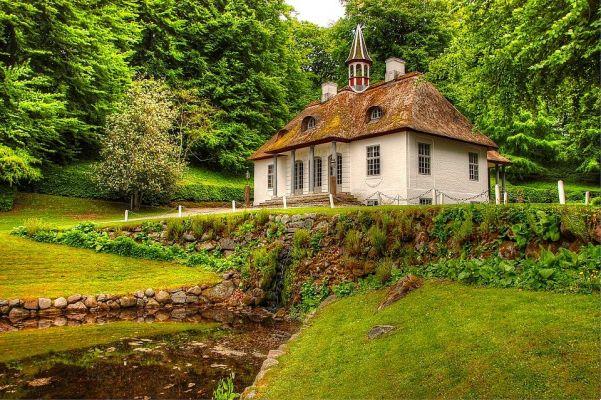
Prices
We have not found much convenience in purchases and many everyday objects are more expensive than here.
The bike
If you are a lover of two wheels, this is the ideal country for you.
The network of cycle paths is very extensive and bicycles are a very popular means of transport for the Danes, especially in the cities.
The viability
The Danish road network is excellent, the traffic is never excessive and you can quickly reach any place in the country.
The motorways are free and there are numerous rest areas with benches and toilets, whose cleanliness is extraordinary.
The only thing to keep in mind is the obligation of dipped headlights even during the day.
The food
Traveling with the girls and moreover in a camper, it was not possible for us to taste the local specialties: the youngest has intolerances and we did not want to risk it!
The only thing we ate were the hot dogs, certainly better than the German ones and which are called "Polsker" here.
The tongue
Impossible to understand Danish! Fortunately everyone, both old and not, speaks English well and therefore for those who practice it even just a little there are no big problems!
Curiosity
Often in the back streets of the countryside or near the houses you will see wooden stalls with merchandise on top: it is a kind of market, who passes by can buy what they want and put the money in a small box next to it. There is no one who controls and no one who takes anything away. Danish honesty!
Danes love to adorn their windows and you will often see trinkets, candles and orchids there, flawless taste.
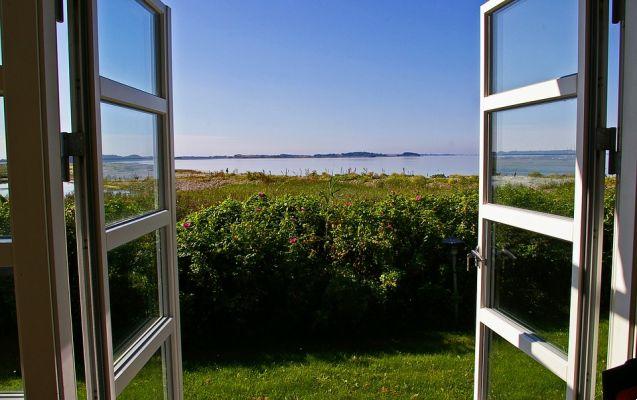
Denmark pictures and photos
